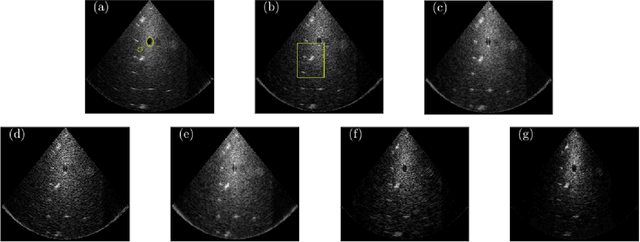Deep Unfolded Recovery of Sub-Nyquist Sampled Ultrasound Image
Paper and Code
Mar 01, 2021



The most common technique for generating B-mode ultrasound (US) images is delay and sum (DAS) beamforming, where the signals received at the transducer array are sampled before an appropriate delay is applied. This necessitates sampling rates exceeding the Nyquist rate and the use of a large number of antenna elements to ensure sufficient image quality. Recently we proposed methods to reduce the sampling rate and the array size relying on image recovery using iterative algorithms, based on compressed sensing (CS) and the finite rate of innovation (FRI) frameworks. Iterative algorithms typically require a large number of iterations, making them difficult to use in real-time. Here, we propose a reconstruction method from sub-Nyquist samples in the time and spatial domain, that is based on unfolding the ISTA algorithm, resulting in an efficient and interpretable deep network. The inputs to our network are the subsampled beamformed signals after summation and delay in the frequency domain, requiring only a subset of the US signal to be stored for recovery. Our method allows reducing the number of array elements, sampling rate, and computational time while ensuring high quality imaging performance. Using \emph{in vivo} data we demonstrate that the proposed method yields high-quality images while reducing the data volume traditionally used up to 36 times. In terms of image resolution and contrast, our technique outperforms previously suggested methods as well as DAS and minimum-variance (MV) beamforming, paving the way to real-time applicable recovery methods.
 Add to Chrome
Add to Chrome Add to Firefox
Add to Firefox Add to Edge
Add to Edge